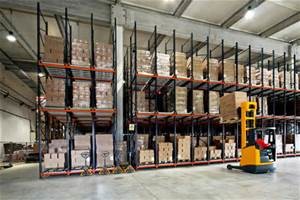Under Our Feet
It was late and one of the three-person teams had been watching the same team member load pallets of product onto trucks for six hours. It was the second day of the Continuous Improvement Kaizen event.
“Why,” asked Alexis, the General Manager, to the supervisor and loader on her team, “have we been seeing dozens and dozens of pallets with the same single case on them? They take up space on the dock and are eventually stacked by the loader on another pallet going to the same store. That’s waste.”
“Because those items are slotted up high. We have to lower the product down, move a case onto another pallet, put the rest of the product back up, then take the single new pallet to the dock,” said Liz, one of the shift’s best loaders.
“But why are they slotted up high when they are fast movers?” Alexis queried.
“Because they are new items,” said Kenta. He was an experienced supervisor who had been reluctant to be part of this latest corporate “program” to try to engage employees in finding ways to improve the operation.
“Then why do we slot new items up high? Shouldn’t we slot them based on their movement,” Alexis persisted, using the 5 Whys approach she had learned the day before.
“I don’t know,” said Kenta. “Let me call Sam in Inventory Control.”
He dialed Sam on his Spectralink and put him on the speaker.
“Hey Sam, Kenta here. I have a question for you. Why do we slot high volume new items up in the rack when they come in?”
“Remember when we got that big customer a few years ago?” Sam asked. “They brought in all of those new items. We didn’t have room in the floor slots so we slotted them all up high.”
“But that customer left us last year,” Kenta responded. “We don’t have the slot shortage anymore. Why don’t we know when new items are fast movers and slot them in floor slots?”
“We don’t have good sales data on the items because they’re new,” Sam explained.
“We can tell in the first week if they are fast moving items, but nobody ever asks us,” Liz interjected. “We could let you know going forward what we’re seeing and maybe you could put them in floor slots.”
“That’s a great idea,” said Sam. “Let me come out and you can help me put together a list right now. That way we can re-slot them tonight after shipping is completed. I really appreciate your helping us on this, Liz.”
The next day, all of the observations from the teams were listed. They spent the rest of the day identifying waste, defining problems, prioritizing them according to impact and costs, then conducting root cause analyses using the 5 Why’s tool. Finally, they came up with countermeasures and how they were going to implement and sustain them.
Everyone shared their comments at the end of the day about what they had learned from using a different way of seeing and identifying problems. The associates said they really appreciated being involved in the process and working with management on solving problems. The front line leaders admitted they walked by many problems everyday and sometimes didn’t really see them for what they were.
Alexis spoke last. “We spend hours in our upstairs conference room talking about ways to reduce our costs,” she observed. “Sometimes we just don’t see the things that are happening right under our feet. That slotting change we made today will save us over $200,000 per year. I think we all will be looking at how and why we do things differently from now on.”
_________
Continuous Improvement Lean principles and tools teach leaders to see things they usually don’t. Leaders need to “go and see” the work being done. Asking others for help to identify problems and countermeasures is how respect can be gained and shown to others. Asking a lot of why’s takes the focus off of the people and puts it on the understanding the process.
It’s all about seeing and eliminating waste. Don’t forget to look at what is right under your feet.
By Bruce Trippet, President, OpportunityLinks LLC. All Rights Reserved.

 Bruce Trippet is President of OpportunityLinks LLC, a consulting company specializing in training, coaching and consulting continuous improvement transformations.
Bruce Trippet is President of OpportunityLinks LLC, a consulting company specializing in training, coaching and consulting continuous improvement transformations.